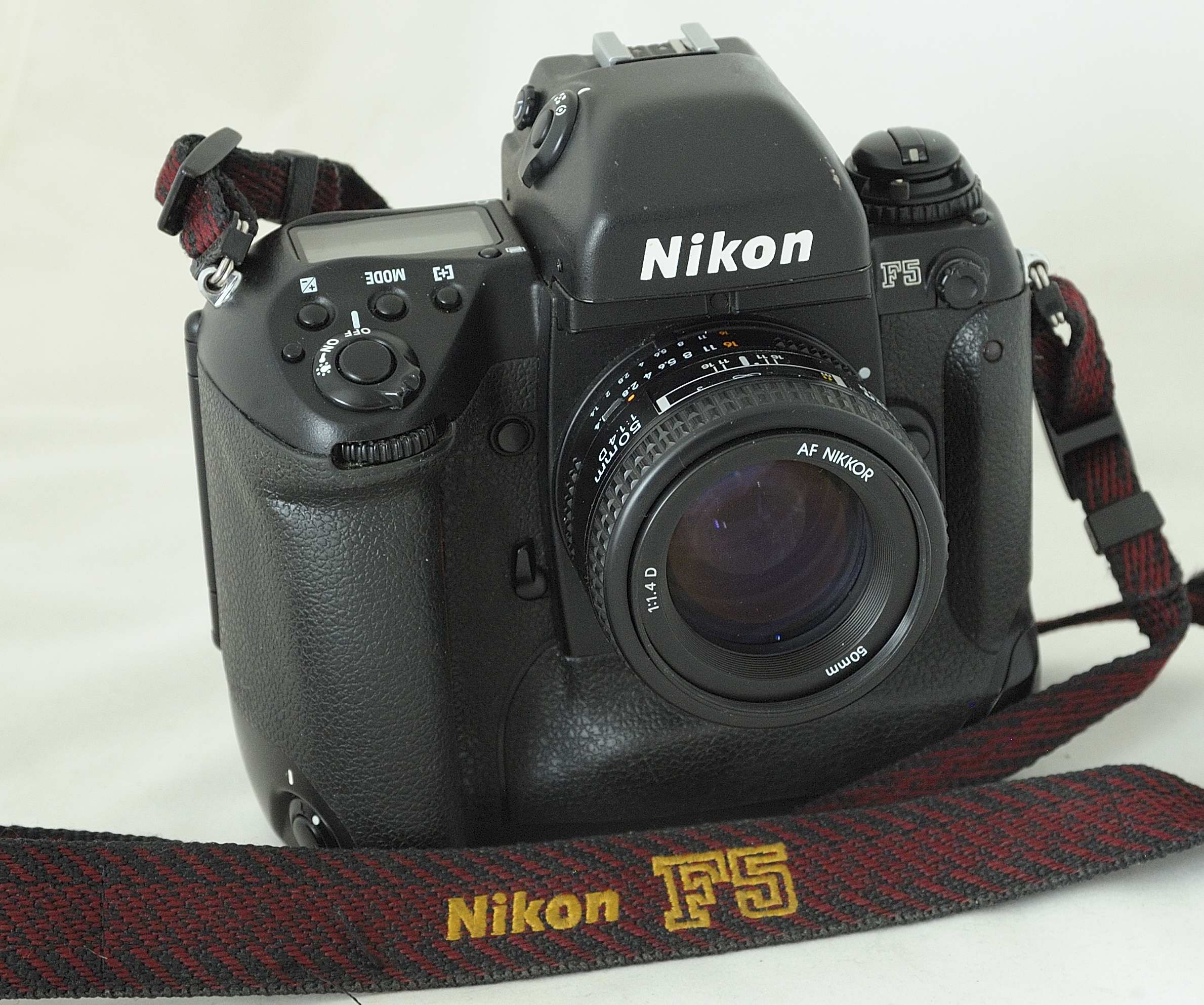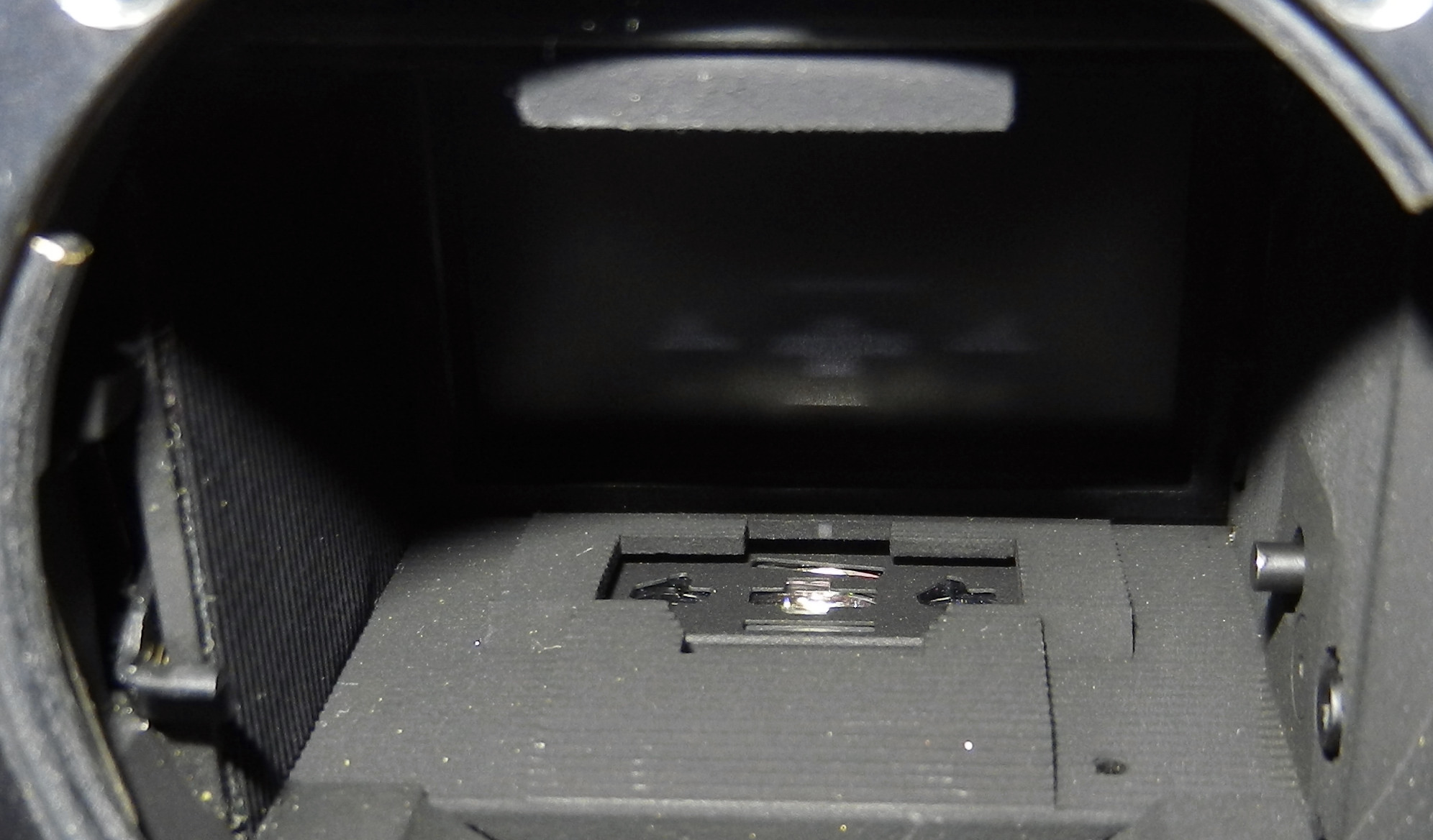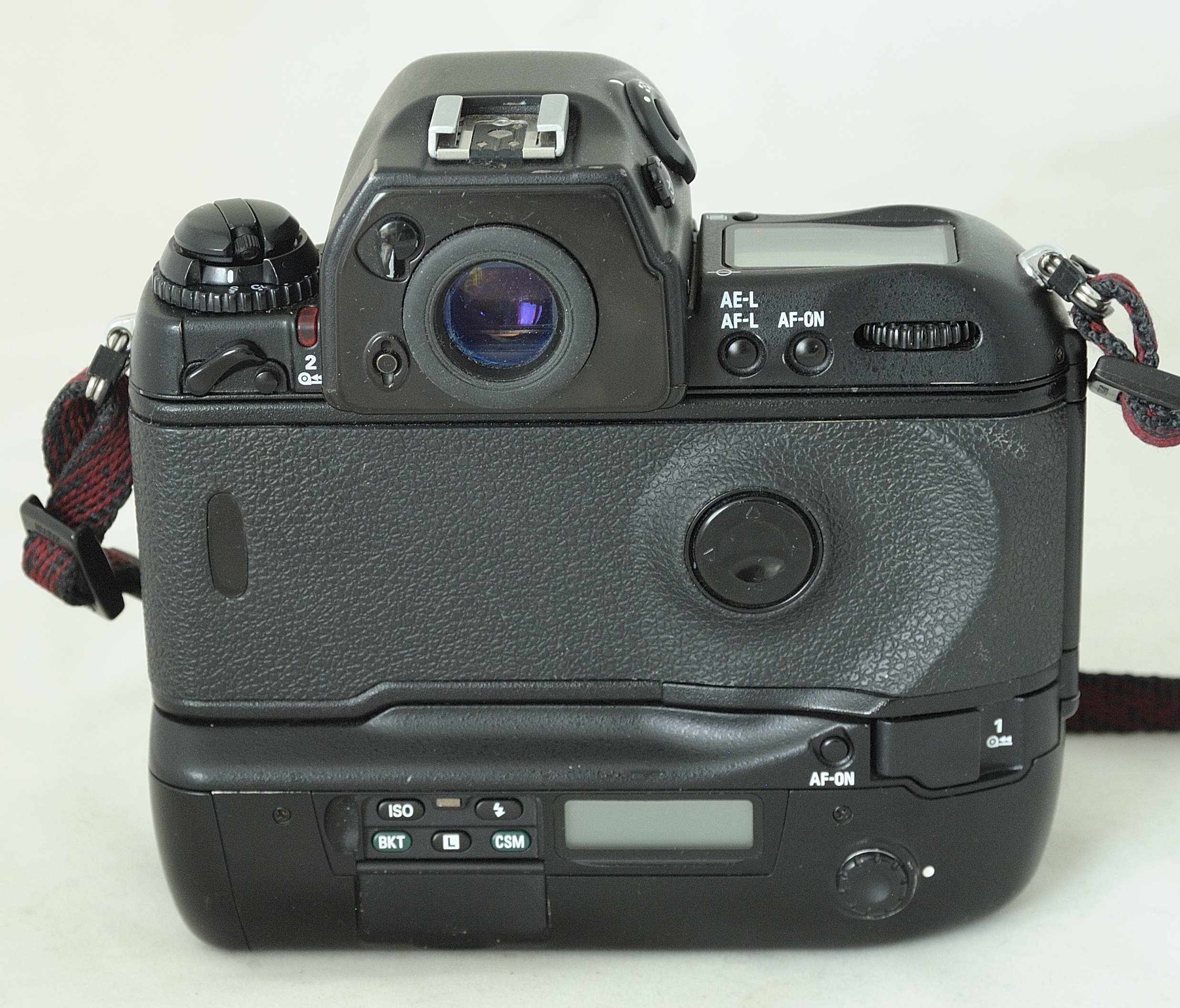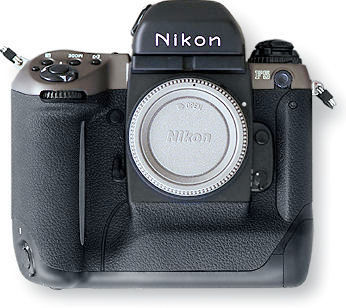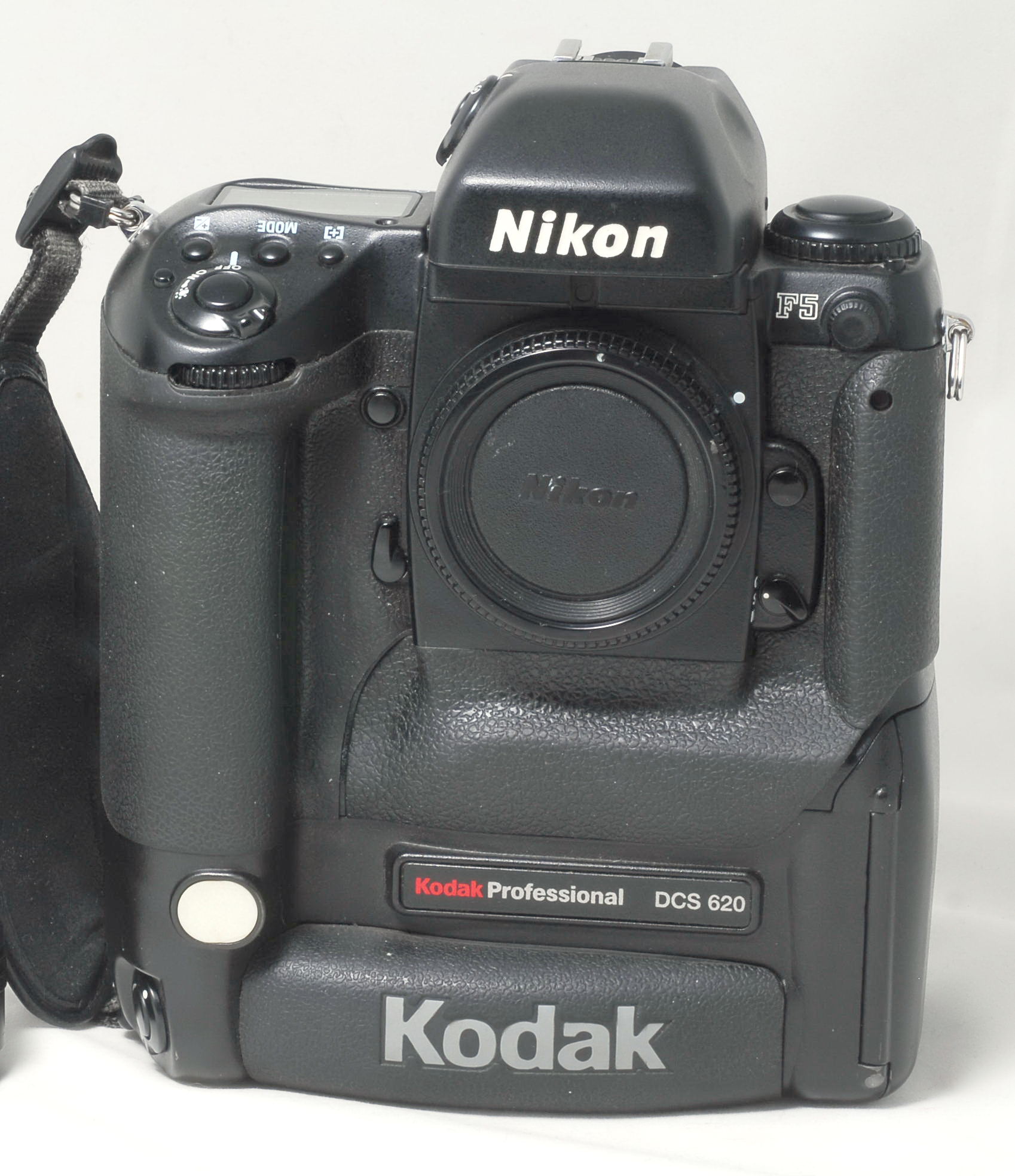Nikon F5
Nikon F5 : the last system camera of the world's largest camera system
After a long tim of guessing and searching for info Nikon introduced this beautiful professional camera in June 1996 and made it available in October 1996. The Nikon F5 has become the last camera system alike its 4 renowned predecessors. A body that can be 'dressed' with viewfinders, backs, motor drives, etc. The Nikon F6 hasn't got all these features. The Nikon F5 had at its introduction a long list of new features, like the RGB-sensor for 3D color matrix metering, lock-on (auto)focus tracking, multi-CAM-1300 auto focus sensor with 5 areas, flash sync at 1/300 sec., built-in motor drive (8 fps.), shutter control unit, titanium viewfinder and many more. The 3D color matrix meter incorporates a 1,005-pixel charged-coupled device (CCD) which is able to read the main colors red, green and blue. The information received from the sensor (brightness, selected focus and distance, contrast and color characteristics) is linked to more than 30,000 different exposures, which are being stored in the camera's micro-processor. If you think that this processing is taking a few minutes you are wrong. Within some milliseconds all this information is processed and is delivering a very balanced exposure resulting in top images. This revolutionary system is the world's first 3D color metering system. Nikon has done it again!
Under the mirror the Multi-CAM1300 autofocus sensor module is placed, featuring five separate detection sensors. The Nikon F5 can be combined with nearly all Nikkors ever produced, including the very first Nikkor (after a small modification of the lens mount however) and the latest VR-lens. Even in this digital era a Nikon F5 is a very reliable back-up camera.
The standard viewfinder (DP-30) can be replaced by the DA-30 Action Finder, the DW-31 High-Magnification Finder or the DW-30 waist-level finder. All viewfinders will give a 100% image covering, the DW-31 and DW-30 provide spot metering only. More info about the accessories can be found in the accessories chapter.
At the back of the Nikon F5 the autofocus selector and a window to see the film cassette. Although the camera can rewind a film by the built-in motor drive there is a manual rewind possibility in order to save battery power and to avoid noise. The camera has two shutter release buttons and two autofocus buttons (for horizontal and vertical use). In the lower LCD screen program and CSM (custom setting menu) can be read. Serial numbers of the Nikon F5 started at 3000000; the last serial number - confirmed by the factory - is 3235612. Mid 2004 production was stopped. To celebrate the anniversary of the very first Nikon camera (Nikon I rangefinder camera) in 1948 Nikon Corporation presented on April 21, 1998 a special version (in a limited edition of 3000) of the Nikon F5: the Nikon F5 Limited (see below). The inside of the camera and its features are identical to the regular Nikon F5, but the outside carries gray covers (including the BF-1A body cap), the old Jugendstil-engraving 'Nikon' on its front and at the back the old 'Nippon Kogaku Tokyo' logo with an additional (stylish) '50'. A special strap with '50 years Nikon 1948-1998 - Nikon F5' came with the camera as well as a bag. Serial numbers start at 311xxxx.
Nikon collector's item Nikon F5 Limited
The Nikon F5 became the 'father' of the Nikon D1-series. The body and many internal parts are used in or form the basis of the first digital single lens reflex camera. A few months before the Nikon D1 was introduced, Kodak introduced (January 1999) the above pictured Kodak DCS 620, based on the Nikon F5.
|
